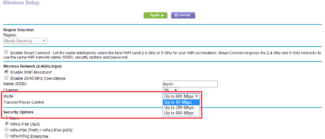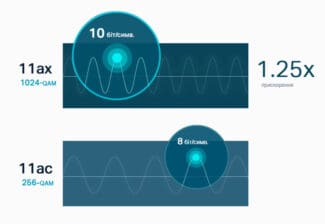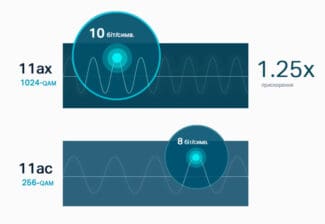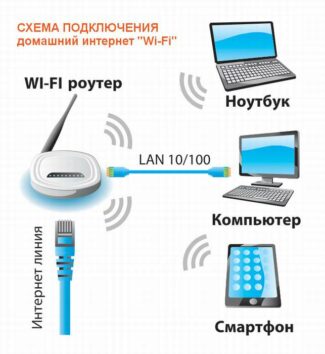Of all the versions of the standard, the first three are considered nearly extinct, with the most commonly used being 802.11N. Although, without a doubt, the version that has been very popular so far has been the 802.11G version. This version was published in 2003 and after a couple of years the use of Wi-Fi devices began to grow significantly.

Residential WiFi N network speeds.
While Wi-Fi technology has seen significant growth and helps provide Internet access to millions of people around the world, recent versions of the standard haven't exactly helped Wi-Fi users know what the actual performance of their network is. In this article, we'll look at the reasons for the confusion surrounding Wi-Fi network performance and analyze the case of the version most used today, commercially known as Wi-Fi N.
Before we start analyzing the performance of Wi-Fi N household connections, we'll look at different versions of the standard.
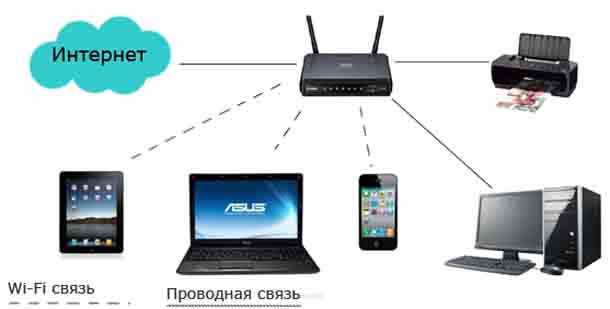
Wi-Fi technology is based on a standard developed by the IEEE, a global organization dedicated to the development of standards in science and technology. The first official version of the standard was published in 1997 and was called IEEE 802.11.
Along with the development of the IEEE standard, in 1999, some of the most important wireless solution vendors formed an organization called WECA (Wireless Ethernet Compatibility Alliance) to ensure the compatibility of wireless devices developed under this standard. A few years later, the organization changes its name to the Wi-Fi Alliance. IEEE 802.11 compliant devices are sold under the name Wi-Fi (Wireless Fidelity) to ensure compatibility with the rest of the market.
Since then, several versions have been published with successive improvements until reaching the current version, known as IEEE 802.11ac and published in January 2014. The following table summarizes all versions:
| Standard | Trade names | Year | Maximum speed theoretical |
| IEEE 802.11 | – | 1997 | 2 Mbps |
| IEEE 802.11 a | 802.11 A | 1999 | 54 Mbps |
| IEEE 802.11 b | 802.11 B, WiFi B | 1999 | 11 Mbps |
| IEEE 802.11 g | 802.11 G, WiFi G | 2003 | 54 Mbps |
| IEEE 802.11 n | 802.11 N, WiFi N | 2009 | 600 Mbps |
| IEEE 802.11 ac | 802.11 AC, WiFi AC | 2014 | 1.3 Gbps (*) |
802.11N and all its variations
Prior to the previous version, 802.11G, all Wi-Fi devices had the same characteristics with which performance was more or less the same under optimal conditions with a maximum theoretical limit of 54 Mbps for all devices.
But 802.11N defines several operating configurations, each offering different functions, and it is not necessary for a certified device such as 802.11N to include every possible configuration and therefore offer maximum performance.
The key to all of this is called a modulation and coding scheme or better known by its acronym MCS (Modulation and Coding Scheme). The modulation and coding scheme determines the value of certain transmission parameters which directly affect the maximum speed achieved, that is the performance of Wi-Fi connections.
At the end of this article a more technical appendix on this feature is offered. For now, and to simplify things, let's say that the IEEE 802.11n standard defines up to 77 MCS, that is, 77 different modes of operation, and each of them offers up to four theoretical maximum speeds, depending on the channel width used and the guard interval.
Only 32 of these modes have been implemented in practice. Mode 0, the lowest mode, offers a theoretical maximum speed of 6.50 Mbps (for a 20 MHz channel and 800 ns guard interval). While the highest mode, 31, provides a theoretical maximum speed of 600 Mbps (with a 40 MHz channel and a 400 ns guard interval). In fact, this last speed of 600 Mbit/s is considered the maximum speed of the standard.
And this is where the important part begins. Of the standard MCS, only the first 16 modes are required in access points (or Wi-Fi routers). And only the first 8 are mandatory for client devices – laptops, smartphones, tablets, etc. All others are optional.
The previous table shows the comparative speeds of different WiFi G and N devices. It should be noted that there is only one possible configuration for WiFi G, while for WiFi N we can find up to 4 different ones, each with different maximum speeds depending on the implemented modes. Only the WiFi N device that implements all modes of operation, from 0 to 31, can use a theoretical maximum speed of 600 Mbps.
Read More:

